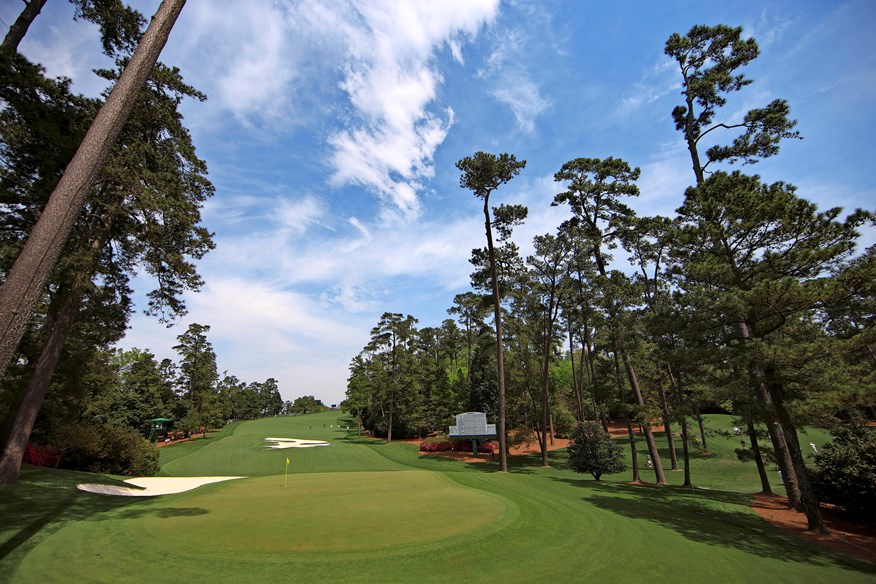The Masters 2025: Hole-by-hole course guide to Augusta National – with tips from a former champ!
Published:
Our 2025 Masters course guide takes you through Augusta National hole by hole, with expert strategy insights from former champion Bubba Watson.
JUMP TO AUGUSTA HOLE: 1 | 2 | 3 | 4 | 5 | 6 | 7 | 8 | 9 | 10 | 11 | 12 | 13 | 14 | 15 | 16 | 17 | 18 |
There are iconic sporting venues all over the world – Wembley Stadium, Santiago Bernabéu, Center Court at Wimbledon, the Maracanã, Madison Square Garden – but for golfers, not many venues come close to the prestige of Augusta National Golf Club, home of The Masters.
The special tree-lined drive down Magnolia Lane is nothing short of breathtaking. In the distance is the Augusta National clubhouse, built in 1854 to serve as the home of indigo plantation owner Dennis Redmond. The iconic three-story building is believed to be the first concrete house built in the American South.
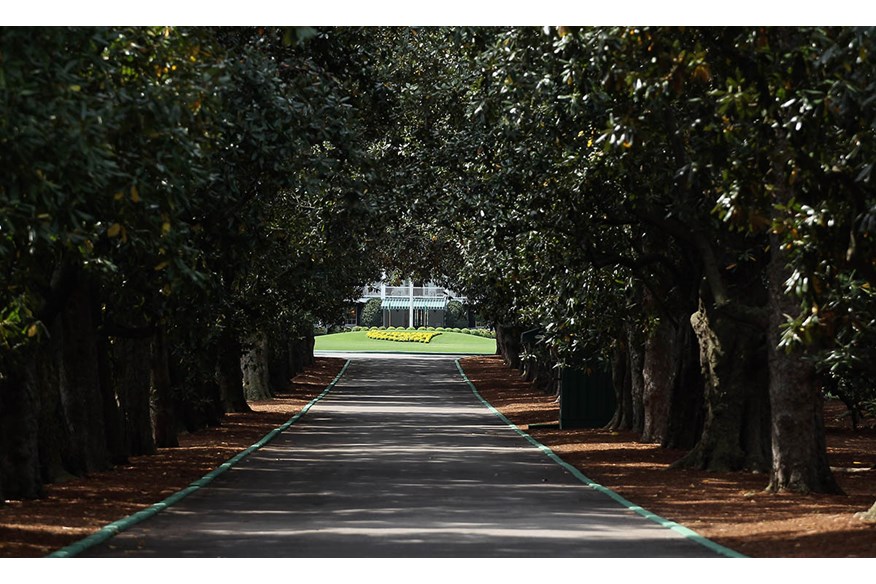
Baron Louis Berckmans, a Belgian horticulturist, bought the 365-acre property in 1857. Together with his son, Prosper Julius Alphonse, he established Fruitland Nurseries. By the time Jones and Roberts discovered the place in 1931, the charter for the nursery had long expired.
Jones retired from the competitive golf game and focused on pursuing the dream of developing a course fit to host a major. He achieved that goal in 1934 when Augusta National opened its gates for the inaugural Masters Invitational Tournament, its course created by Jones, Roberts, and the Yorkshire architect Alister MacKenzie, who took his inspiration from The Old Course at St. Andrews.
The hole names at Augusta National pay tribute to its former life as a plant nursery under the supervision of Baron Louis Berckmans and it was he who decided where to plant all the 18 different varieties of plants the holes are named after.
Augusta National Hole Names
Hole 1: Tea Olive – Par 4: 445 yards
Hole 2: Pink Dogwood – Par 5: 585 yards
Hole 3: Flowering Peach – Par 4: 350 yards
Hole 4: Flowering Crab Apple – Par 3: 240 yards
Hole 5: Magnolia – Par 4: 495 yards
Hole 6: Juniper – Par 3: 180 yards
Hole 7: Pampas – Par 4: 450 yards
Hole 8: Yellow Jasmine – Par 5: 570 yards
Hole 9: Carolina Cherry – Par 4: 460 yards
Hole 10: Camellia – Par 4: 495 yards
Hole 11: White Dogwood – Par 4: 520 yards
Hole 12: Golden Bell – Par 3: 155 yards
Hole 13: Azalea – Par 5: 545 yards
Hole 14: Chinese Fir – Par 4: 440 yards
Hole 15: Firethorn – Par 5: 550 yards
Hole 16: Redbud – Par 3: 170 yards
Hole 17: Nandia – Par 4: 440 yards
Hole 18: Holly – Par 4: 465 yards
Augusta National Hole-by-Hole Course Guide
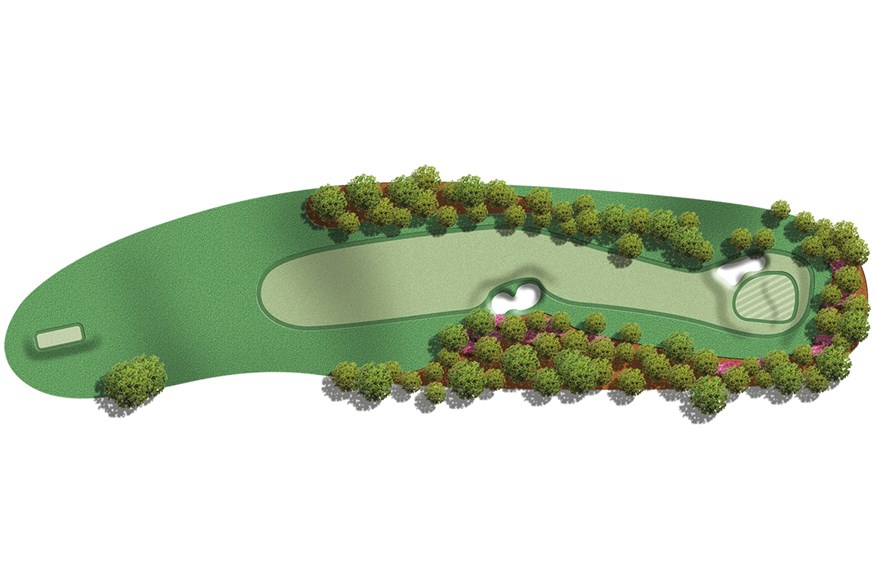
Hole No.1: Tea Olive
Par 4: 445 Yards
The first at Augusta is a slight dog-leg right, played uphill. Drives to the left can easily find the trees, and take care to avoid the bunker up the right as it makes the approach shot into an undulating green much harder.
The first hole has a reputation for being notoriously difficult, with a scoring average of 4.24 making it the sixth-hardest hole on the course. Tea Olive is certainly a hole golfers will want to escape with a four and get to the second tee unscathed.
Bubba Watson’s plan:
Depending on the weather and the strength and direction of the wind, I’ll hit driver or 3-wood off the tee.
Either way, I’m trying to cut it off the right bunker back towards the fairway. That bunker is playable to a degree, but you really don’t want to be in it if you can help it.
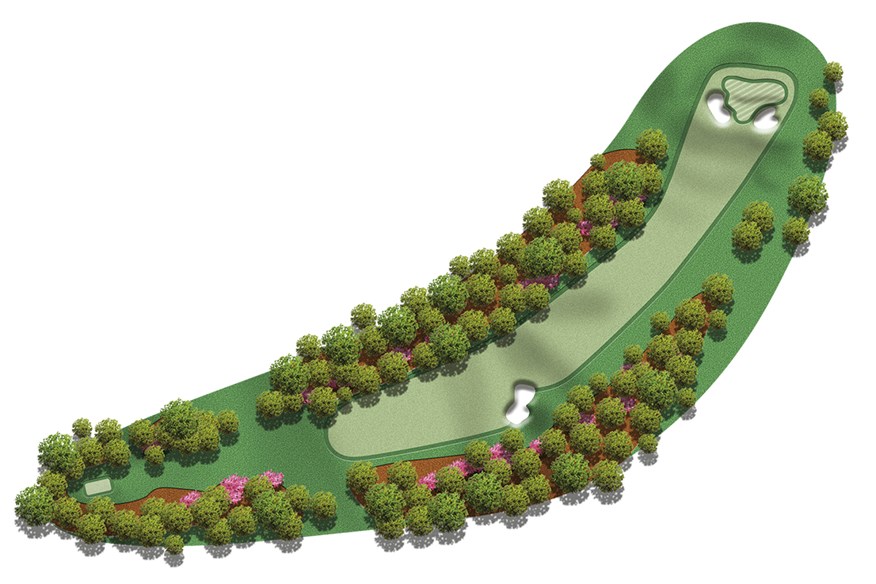
Hole No.2: Pink Dogwood
Par 5: 585 Yards
The difficult first hole is followed up by the rather forgiving second hole at Augusta National. It is a downhill dog-leg left par-5 that is reachable in two for most players. If you hit the fairway off the tee your ball will be in a prime position for the approach shot. The green is well protected by two large deep bunkers. making for a tricky shot into the green no matter where your tee shot ends up.
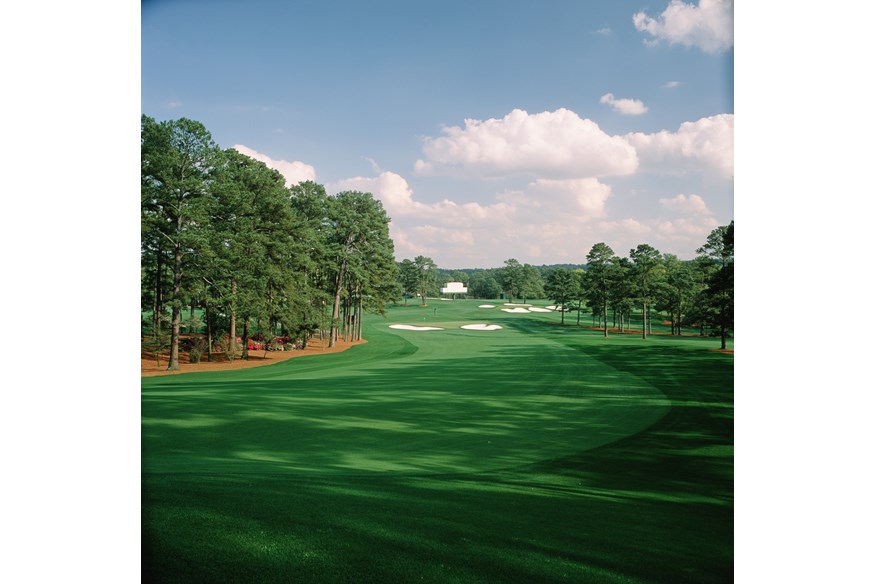
Lots of the pros will tell you that these bunkers are not a bad spot, and they fancy getting up and down from there for a birdie-four. The first real chance for a birdie or better comes on the second and many would see it as a missed opportunity if they didn’t capitalize, with an under-par scoring average of 4.78 making it the third-easiest hole on the course.
Bubba Watson’s plan:
Like I do at the 1st hole, I aim at the right fairway bunker and cut it so the ball lands in that speed slot and keeps going. If I do that, I can get home in two. If you’re in the fairway bunker, it’s a lay-up at worst. So if I’m going to miss, I want to make sure I end up in the bunker and not the trees.
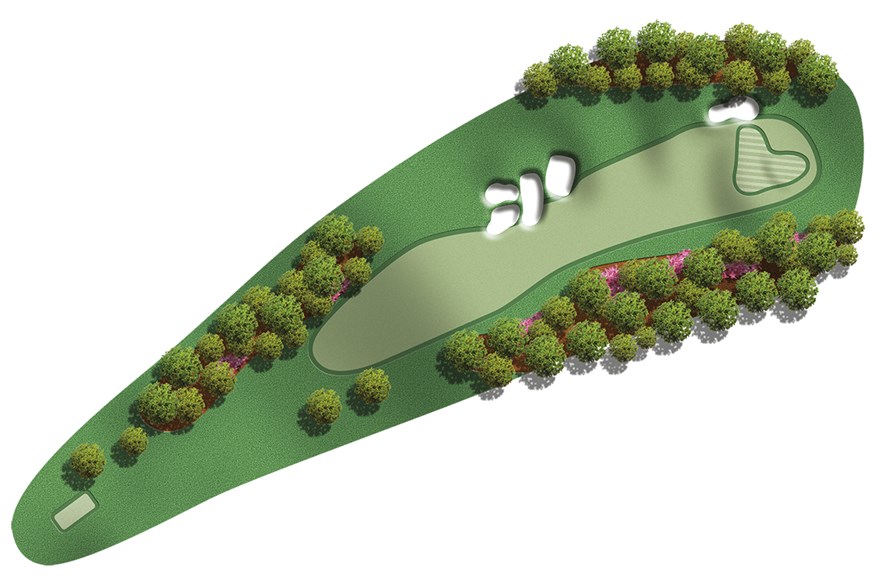
Hole No.3: Flowering Peach
Par 4: 350 Yards
The third is another scoring opportunity early in the round, measuring just 350 yards. Some golfers may bypass the danger of the fairway bunkers by hitting driver as close to the green as possible, while others will take an iron/hybrid off the tee to put themselves in a good position for a full wedge approach shot into a tricky green.
The green slopes from right to left with a bunker guarding the left side; wherever the ball ends up, golfers are left with a tricky putt to the hole. Even though the green is challenging, it’s still a good opportunity for players to move up the leaderboard, with a scoring average of 4.08 (14th hardest). The third is the least changed hole on the course thanks to architects of Augusta Alister Mackenzie and Bobby Jones believing it is nearly perfect in its design.
Bubba Watson’s plan:
This hole is so tough. I might lay back short of the bunkers off the tee when the Sunday pin is in the far-left corner, but typically I hit driver here because I seem to make more pars that way. This hole isn’t about making birdie; it’s about getting your par to keep the round going.
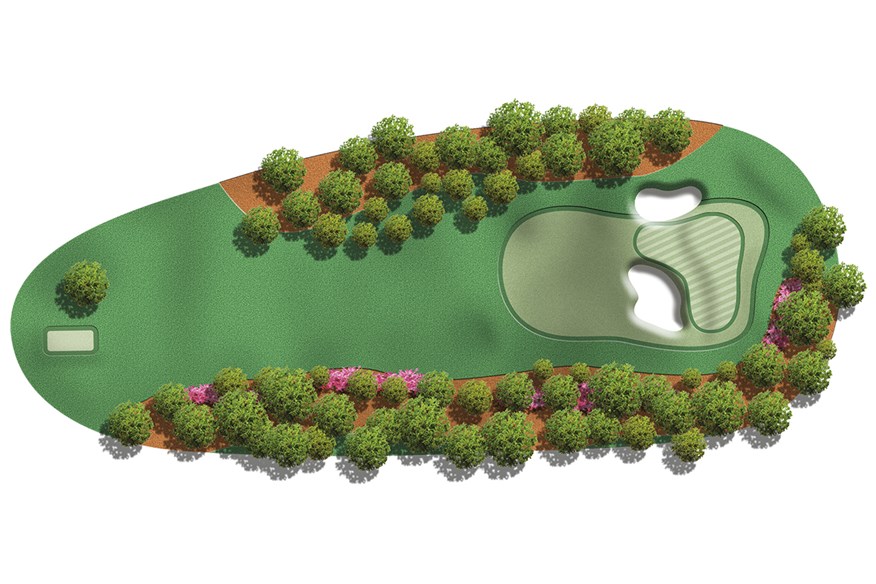
Hole No.4: Flowering Crab Apple
Par 3: 240 Yards
The first par 3 at Augusta National is on Flowering Crab Apple, the beautifully named fourth hole. At 240 yards, it is certainly one of the fiddliest on the course, and to escape with a par is a job well done. Two bunkers at the front right and left guard a green that slopes from back to the front, and the hole can be made even more difficult with the deceptive wind.
With a back pin location, this hole can prove horrible when you have to try to get the ball on the back shelf. This is why historically the scoring average comes in at 3.28, making it the third-hardest hole on the course. Players want to get the ball on the green and two-putt their way onto the fifth tee box without tarnishing the scorecard.
Bubba Watson’s plan:
You’re really just trying to hit the green here. It’s such a difficult hole. When the pin is on the right, the guys will sometimes hit it in the left bunker on purpose because that’s the safest play and you’re fearful of other things that can happen if you miss it right or long.
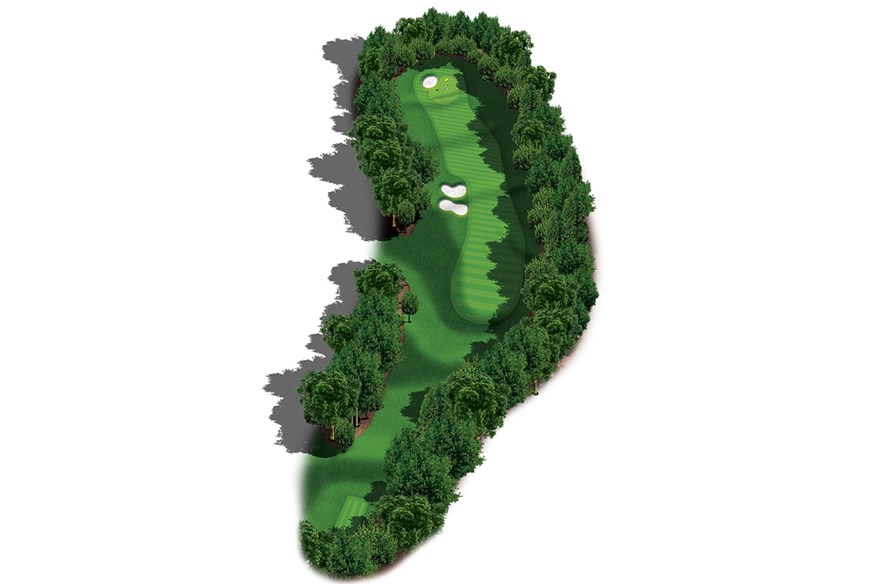
Hole No.5: Magnolia
Par 4: 495 Yards
Taking inspiration from the Road Hole at St. Andrews Old Course, Magnolia, the fifth hole at Augusta National is dangerous from tee to green. Back in 2019, the tee box was moved to make this uphill dog leg hole 40 yards longer. The extra yardage has changed the hole significantly, with the fairway bunkers now requiring a 313-yard carry to clear.
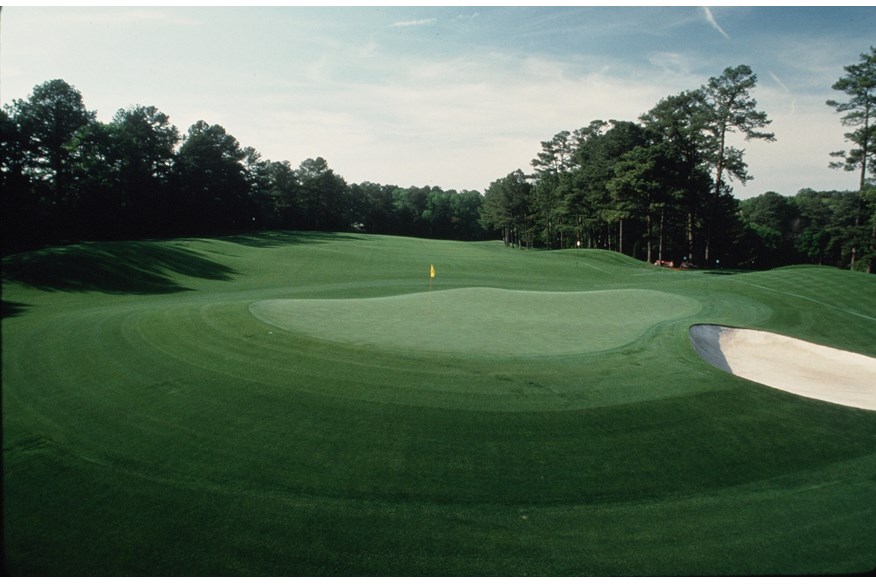
If you find the deep fairway bunkers, you’re left with a hard approach into a green that slopes back to the front, with a bunker at the rear catching any shots that go long and making for a tricky up and down. With the extra yardage and a scoring average of 4.26 (5th hardest), a par or better on the fifth will put a smile on any player’s face.
Bubba Watson’s plan:
My main focus on this hole is staying out of the fairway bunkers off the tee. You have to carry it 315 yards to clear the sand, which is a big ask given that the hole also slopes uphill. But I’ll take a slightly longer shot from a level lie than a shorter iron from a hanging lie any day of the week.
Because of the false front, I’m aiming at a 10ft circle in the center of the green with my second shot. That also leaves an uphill putt on most pin positions. If you end up hitting it close and make birdie, you got lucky. Anyone who says they’re not trying to hit to this 10ft circle is lying.
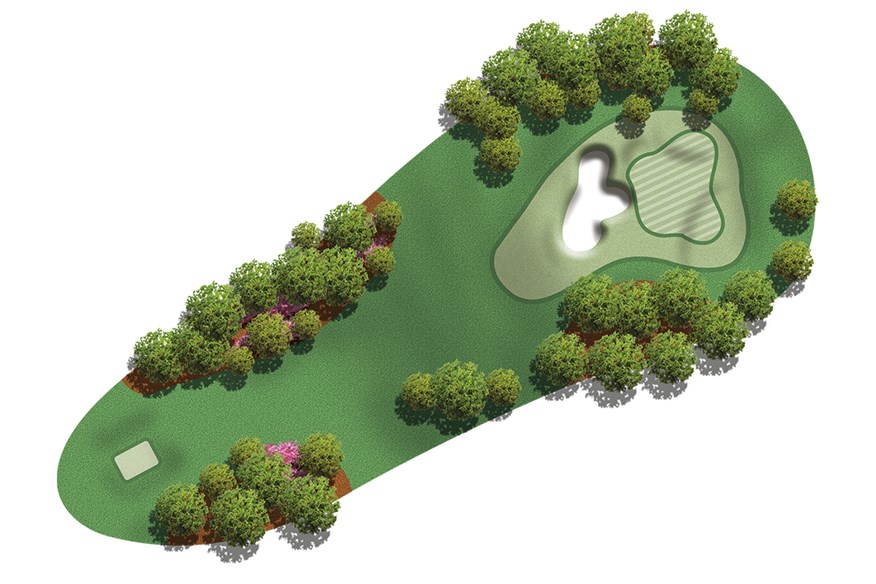
Hole No.6: Juniper
Par 3: 180 Yards
The second par 3 of the day is a little more straightforward. An elevated tee box stares at a large undulating green, which may be easier to land on thanks to its size, but with a slope from back to front and a range of elevation changes, understanding where to land for the pin location is key.
The green has protection from a large bunker at the front left, but shouldn’t come into play too much with a couple of the pin positions, as they favor a shelf in the top right of the green. It can be hard to birdie but with it being more straightforward than a few holes, getting on the green and two-putting should be the minimum aim for most players. A scoring average of 3.14 (13th hardest) means the sixth is one of the easier holes around Augusta National.
Bubba Watson’s plan:
When the pin is on the left, this is a hole where you’re thinking birdie. I made birdie when it was on the right in the opening round in 2012, but in all honesty you’d take par here all four days. Depending on the weather, it can be anything from an 8 or 9-iron to a 6-iron for me.
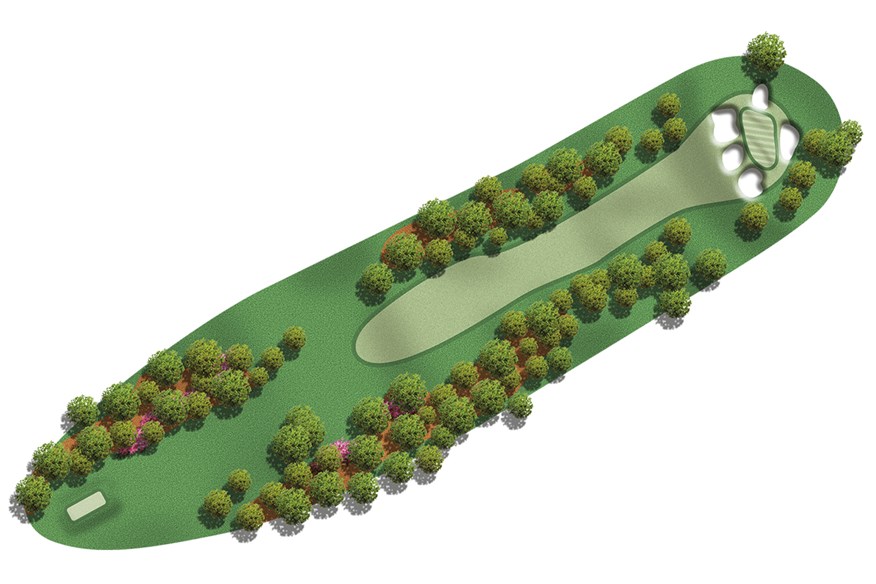
Hole No.7: Pampas
Par 4: 450 Yards
With it being one of the narrowest holes on the front nine, you must find the fairway off the tee in order to give yourself a chance to hit the green with your approach shot. Players often aim for the left center of the fairway to play the second shot off of a flat lie. The second shot is usually played in with a short to mid iron and it’s crucial that you avoid the five bunkers that surround the green – three at the front, and two at the back.
When the hole was first built it didn’t feature a single bunker from tee to green but two-time Masters champion Horton Smith suggested that the green be rebuilt and reinforced with sand traps and, over 80 years later, they’re still catching golfers out. With a scoring average of 4.16 (10th hardest), the seventh is a good scoring hole as long as your tee shot is in play.
Bubba Watson’s plan:
I often hit what I call a “dink driver” here. It’s never a full driver for me, though, because the fairway narrows and you’re trying to hit into the green from a sharp downslope. It’s a birdie hole when the pin is in the bowl and you’re hitting a short iron in, but you must be in the fairway.

Hole No.8: Yellow Jasmine
Par 5: 570 Yards
An accurate drive to miss the fairway bunker is key to giving yourself a chance of reaching the green in two. Depending on the wind, it’s only really the big hitters that can carry the fairway trap, and even if you do clear the bunker, your approach shot into the green is blind and needs to be hit with a draw to get it onto the long, narrow green.
There isn’t much danger by the green – there are no greenside bunkers, with protection instead provided by a series of mounds on the left and right side. A scoring average of 4.82 (15th hardest) puts this par 5 amongst the top easiest holes on the course.
Bubba Watson’s plan:
When it’s playing downwind, I can get over the bunkers off the tee. I’m just trying to hit it in the middle of the fairway and avoid those bunkers, because that gives you a good scoring opportunity by being able to reach the green in two or by leaving yourself a short-range chip.
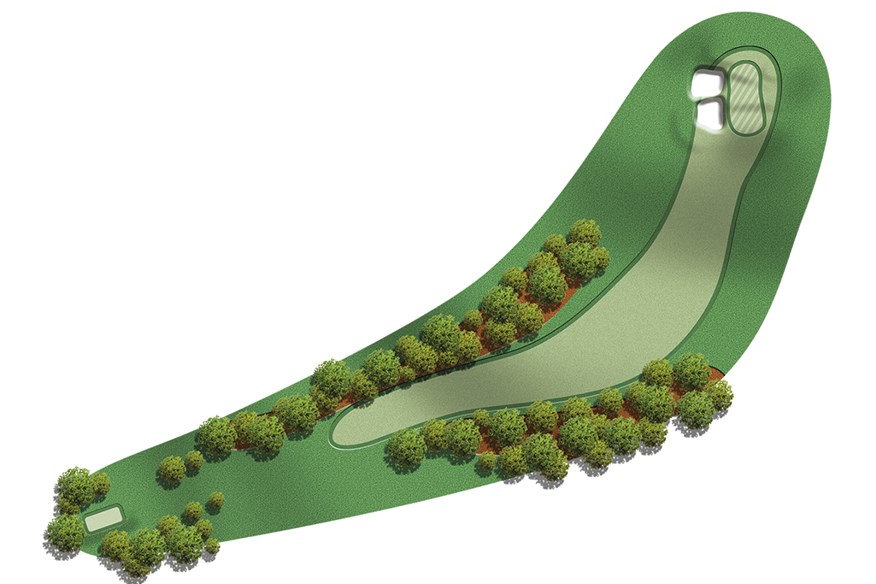
Hole No.9: Carolina Cherry
Par 4: 460 Yards
Finishing off the front loop up by the clubhouse, the ninth is called Carolina Cherry and is well known for its back-to-front sloping green that often gets the best of golfers in pressure moments. Tee shots are best placed down the right as this means your approach shot doesn’t have to flirt with two bunkers on the left side of the green. The bulk of the hole has no real danger and once again favors a draw to get the ball cambering down the sloped fairway.
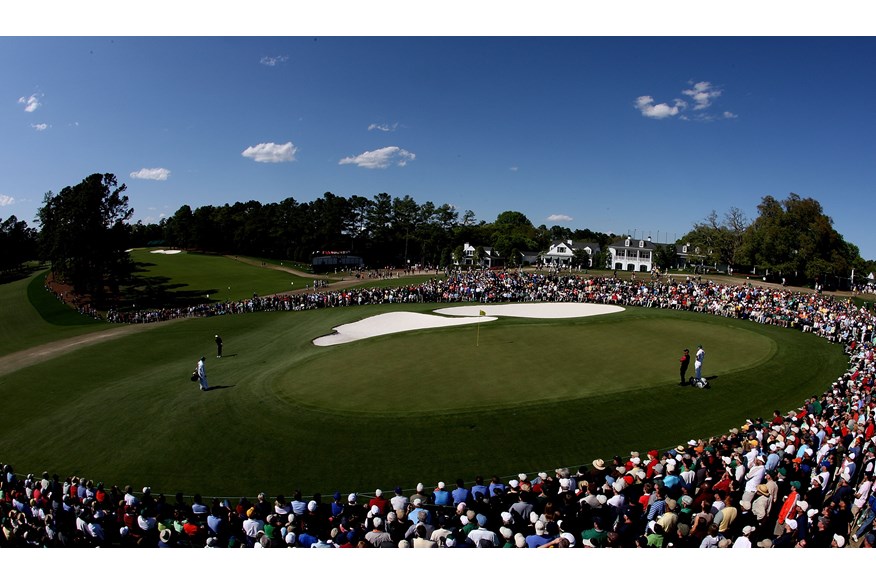
The fun comes at the green, as the heavy slopes and false front can cause serious pain in crucial parts of the round. Over the years we have seen many pin-seeking approach shots narrowly miss the hole and end up back down the fairway. Even though the green is tough, for many players this hole is quite straightforward and is a nice way to finish up the front nine with a scoring average of 4.14 (12th hardest).
Bubba Watson’s plan:
I aim at the right trees and cut it down the hill. The approach is difficult for everybody but I’m trying to hit a fade off a hook lie with a wedge! You can hit it just onto the three-tier green and have a 60-footer up two levels, or come up short and see it spin off. I try to carry it to the second level.
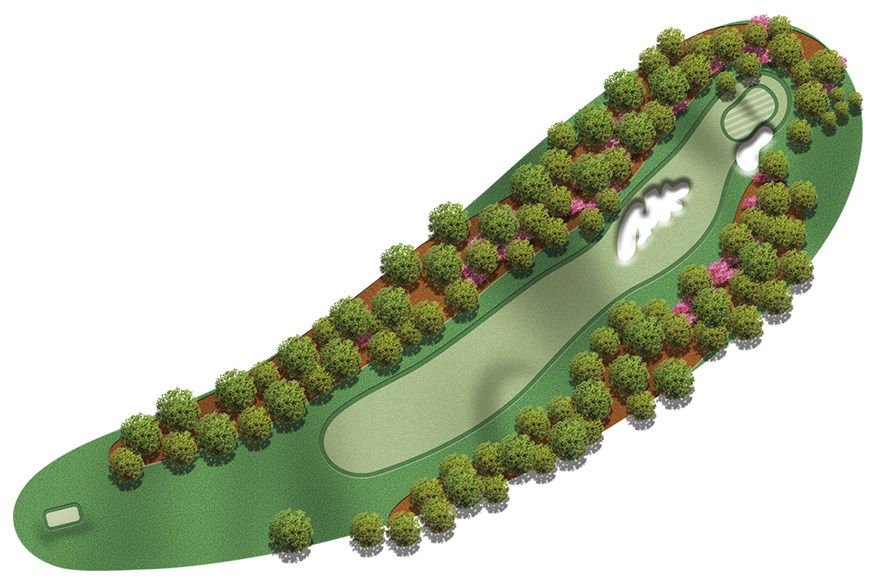
Hole No.10: Camellia
Par 4: 495 Yards
Many say that The Masters starts on the back nine, and thanks to the tenth hole it certainly does. The green slopes severely from right to left and is one of the reasons this is the hardest hole in Masters history. This long par 4 turns steeply downhill with most players aiming for the center or the left of the fairway to give them the best chance on their approach to the green.
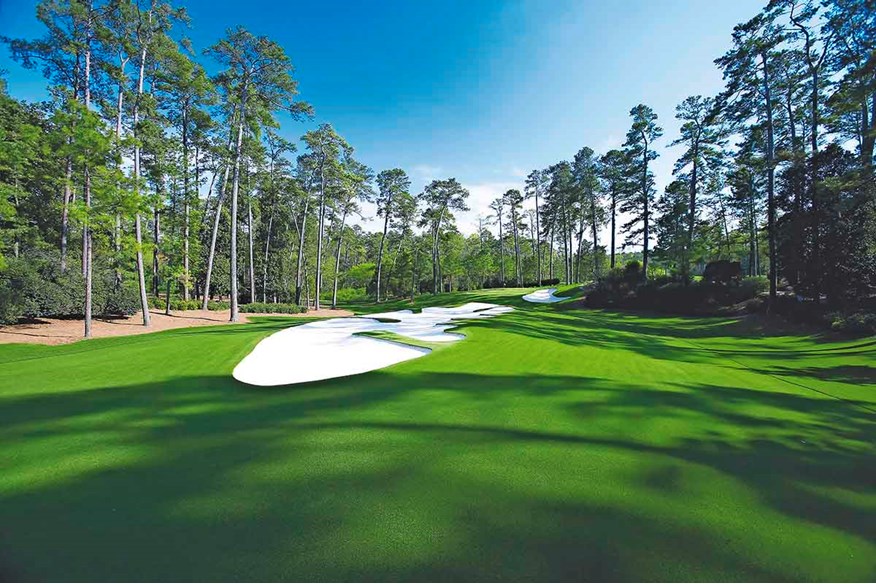
The fairway features a bunker that is nearly 60 yards long and used to be close to the green complex before the green was moved and risen well above it to make the hole much more demanding. Traditionally this was the opening hole at Augusta National, but the one thing that hasn’t changed is that it’s still the hardest hole on the course and has a Masters scoring average of 4.31.
Bubba Watson’s plan:
I swing away and hit a big slice to catch the slot that will help it run down the hill. When the pin is at the front, I’m trying to protect par because the ball can spin back into the fairway and leave a difficult chip. Middle and back pins I go at and try to leave myself inside 20 feet for birdie.
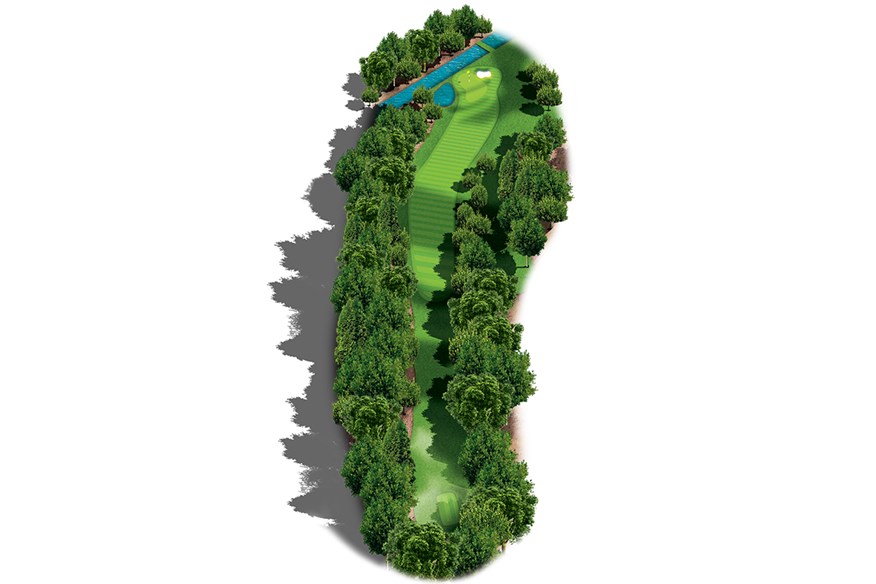
Hole No.11: White Dogwood
Par 4: 520 Yards
What a way to start the back nine! The hardest two holes back-to-back. Two par 4s accumulating over 1,000 yards. Hole 11 is the start of the treacherous Amen Corner, the place where many golfers’ rounds have come undone over the years. The tee shot on 11 plays slightly downhill from left to right and is a stretch to reach the green in two – even for the best in the world.
The hole is full of danger left and right with thick trees lining both sides of the fairway, a pond guarding the left side of the green, Rae’s Creek waiting for your ball if you go long, a bunker near the right center of the green, humps, bumps, and wind that often plays a huge factor down the hill. It’s a lot to contend with and makes the 11th the second-hardest hole on the course.
Bubba Watson’s plan:
Eleven is all about landing it on the front of the green. Making a birdie here is like making an eagle on a par 5. With a front pin or the pin on the right, you have a shot at making birdies. But with the back pins, hit the middle of the green and you’re going to have to two-putt from 40 or 50 feet. You’re just trying to make pars and get out of there.
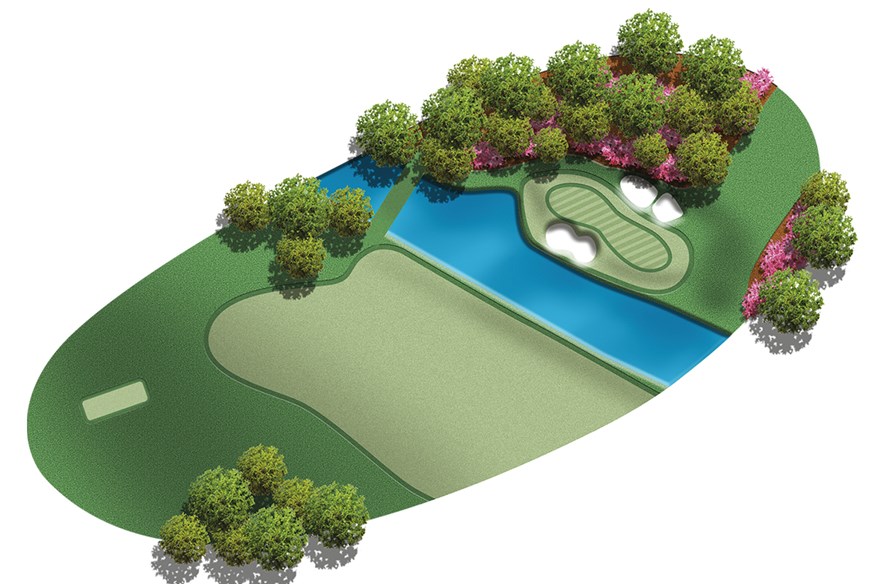
Hole No.12: Golden Bell
Par 3: 155 Yards
It’s not always about distance. The intricate and beautiful 12th hole is only 155 yards but history has proven that it’s one of the hardest at Augusta National. With a scoring average of 3.27, Golden Bell is the fourth-hardest hole and has ruined many scorecards – most famously Jordan Spieth’s in 2016, where he turned a one-shot lead into a three-shot deficit with a quadruple bogey (7) after putting two balls into Rae’s Creek.
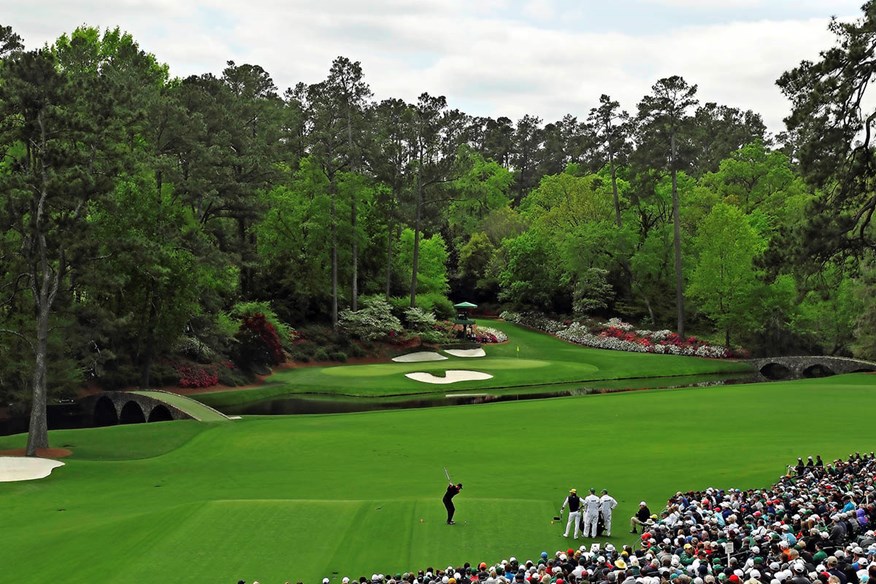
Swirling winds make the distance hard to judge, which is not ideal with the narrow green, looming water, and the glaring sand traps at the front and back of the green. The green here at the 12th is half the size of your average green at Augusta and leaves no margin for error.
Bubba Watson’s plan:
I’m just trying to hit the green. Most of the time it’s a wedge or 9-iron. Certain pins are more of a birdie opportunity for me than others; I prefer the pins on the left side of the green. When it’s on the right, I’m playing much safer, away from the front bunker, and simply trying to land it in the middle of the green.
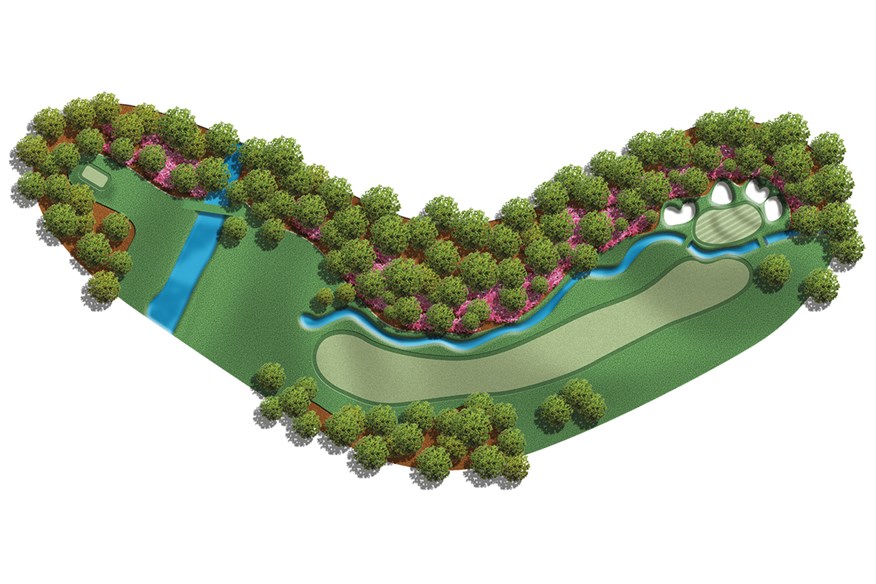
Hole No.13: Azalea
Par 5: 545 Yards
A hole that’s packed with danger from tee to green but many see it as a great opportunity for an eagle. The sweeping dog leg left requires an accurate tee shot to the center of the fairway to allow players to attack the green in two.
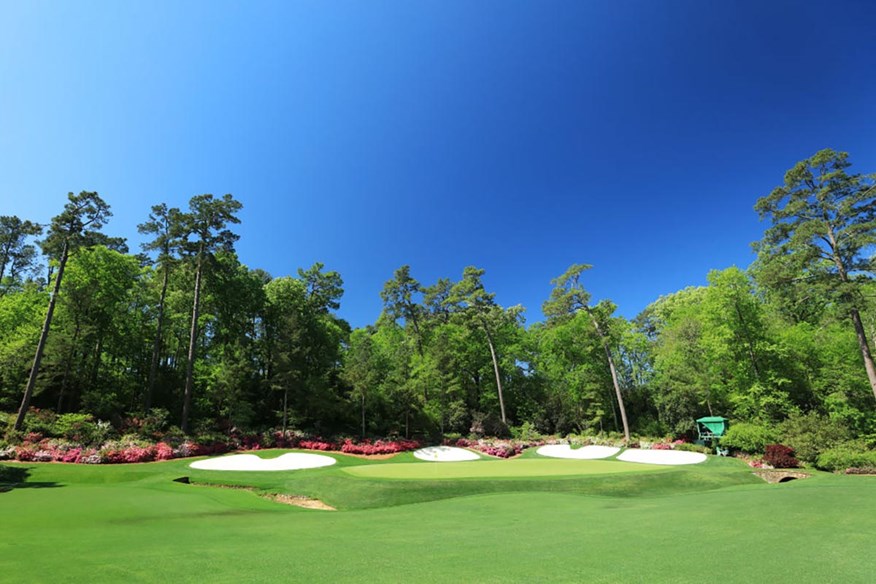
The 13th hole is historically the easiest on the course, but one of Rae’s Creek’s tributaries winds in front of the green and has claimed countless balls at The Masters. Those brave enough to attack the green in two may be met with the four bunkers that protect the back of the green, leaving a horrible shot back down the fast green that runs back to the water.
Bubba Watson’s plan:
It’s now a driver and maybe a long iron into the green. There’s a lot more laying up, just because the water is now in play. You think about it more. I never try to attack the back pin. I’m mostly just trying to land it in the center and have, at worst, a two-putt.
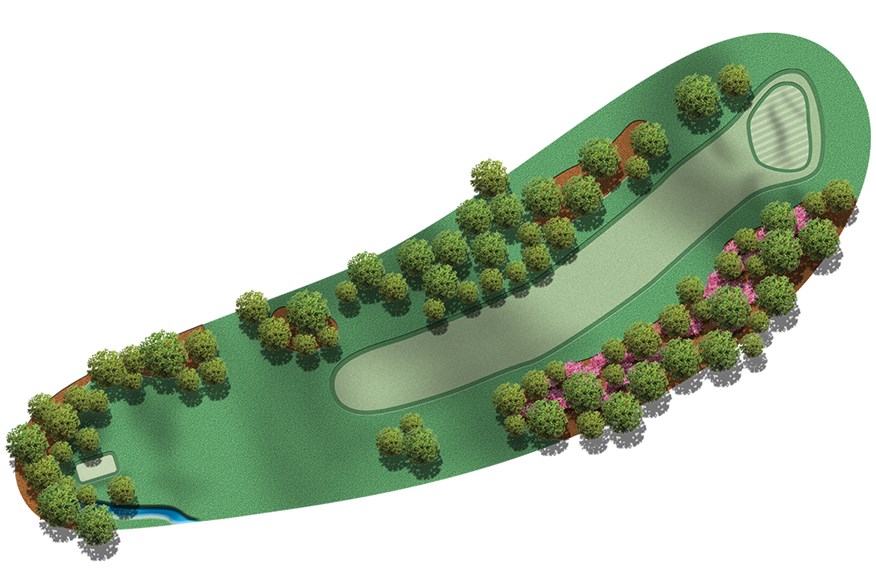
Hole No.14: Chinese Fir
Par 4: 440 Yards
The only hole on the course without a bunker, on the face of it the 14th is straightforward and if played properly it can be a good scoring hole. A well-placed drive in the fairway will see the majority hitting a mid-iron into a large green which is where the problems can arise on this hole. The large green has significant contours and slopes down sharply from left to right, so ball positioning with your approach shot is vital to scoring well.
Statistically, the 14th has been in the top nine hardest holes on the course with a scoring average of 4.17 – if you can play the hole at level par over the week you should pick some ground on the field.
Bubba Watson’s plan:
I just cut it up the fairway to leave a pitching wedge or sand wedge into a two-tiered green. With the right pin, you aim left and let it funnel down off the slope, which I did in 2012 and made birdie. The left pin is delicate – push it and it’s an impossible chip. So I play safe and usually leave a 30-40 footer.
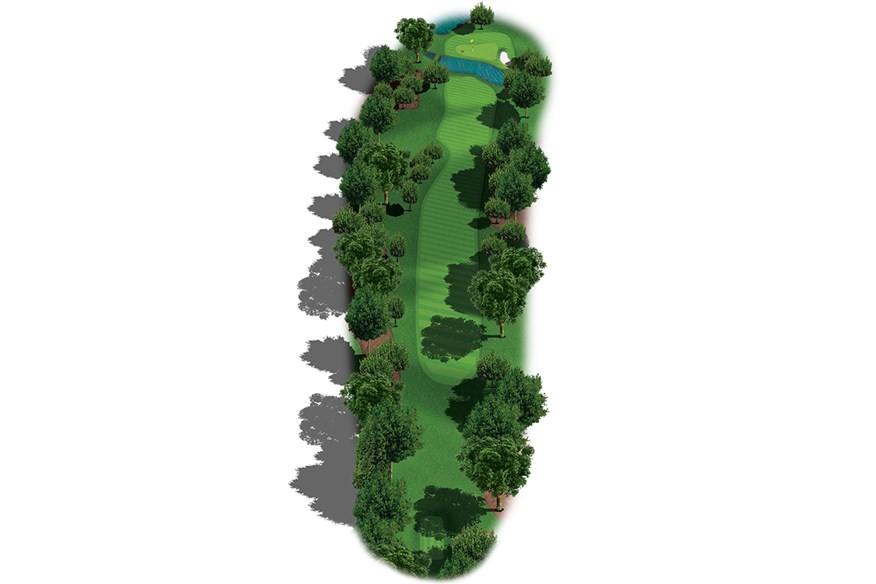
Hole No.15: Firethorn
Par 5: 550 Yards
An opportunity to make a charge up the leaderboard, the 15th will have many players attempting to reach the green in two but like every hole here it comes with its risks. A drive that finds the right center of the fairway will avoid the trees that protrude from the left. This must be followed by a well-hit second that is played over the water and away from the bunker that guards the green on the right.
Over the years, the 15th has been one of the easiest holes on the course with a scoring average of 4.77 (17th hardest). However, the water in front of the green has put the nail in multiple golfers’ coffins, claiming approaches that don’t make the green or ones that spin back from the green over the low-cut fringe, so reaching the middle or back of the green is vital.
Bubba Watson’s plan:
I’m trying to hit a relatively straight, low bullet so I don’t get stuck behind the trees on the left like I did back in 2014. Everyone has a chance to reach the green in two if you hit a half-decent tee shot. The front-center is the biggest part of the green, so I just try to hit it in there and two-putt.
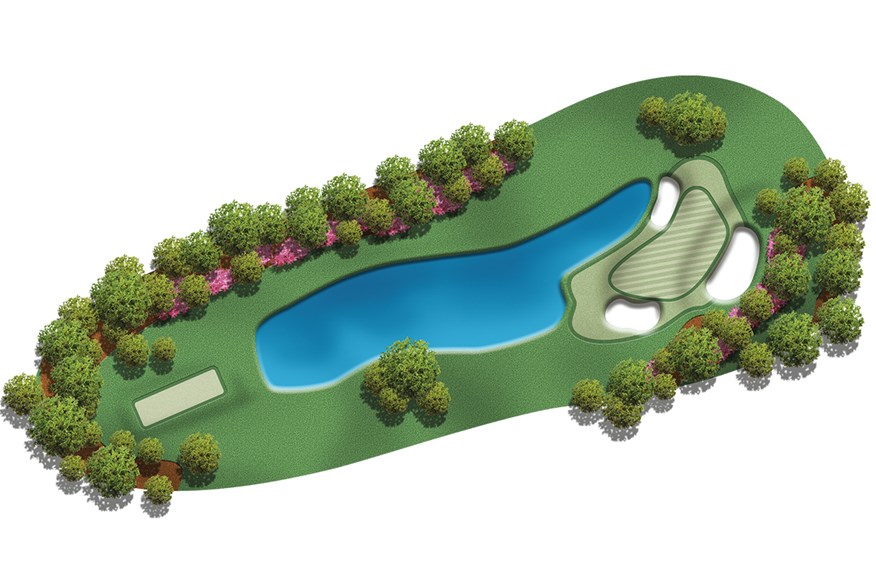
Hole No.16: Redbud
Par 3: 170 Yards
The 16th has seen its fair share of Masters aces over the decades with well over 20 recorded, largely thanks to the friendly final-day pin position that rewards a well-positioned approach shot. The hole is played entirely over water and is protected by three bunkers. The green slopes significantly from right to left, so understanding where to land the ball is key.
The scoring average of the 16th is 3.14, making it the 11th-hardest hole on the course. The hole can be relatively friendly to those who find the green from the tee, but those that don’t will require a little magic like Tiger Woods managed back in 2005 with one of the most famous shots ever.
Bubba Watson’s plan:
When the pin is front-left or back-left, it’s just a perfect cut shot for me with a mid-iron. I seem to play those kinds of pins well. Everybody in the field has trouble with the front-right and back-right pin positions, so I’m just aiming into the bowl in the middle of the green.
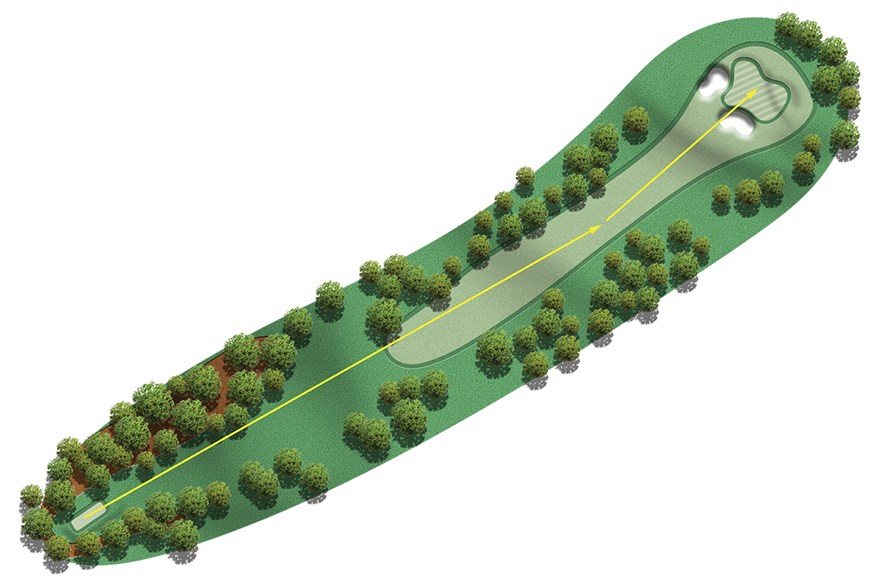
Hole No.17: Nandina
Par 4: 440 Yards
The 17th is one of the tightest on the course and hitting the fairway is crucial to carding a good score. A fairway-finding drive at the crest of the hill will reveal a green protected by two bunkers. On your approach, it is vital that you find the right parts of the green, with the back-right hole location being particularly demanding for players.
The back nine is more demanding with the majority of hardest holes taking up the home stretch. The 17th has played as the 9th-hardest hole with a scoring average of 4.16. But, like other par 4s at Augusta National, if you can place yourself well off the tee you have a chance of scoring well. Avoid the trees on 17 and players have a great chance of finding the green but it can be challenging to get the ball anywhere near the pin thanks to the complicated three-tiered complex.
Bubba Watson’s plan:
When it’s downwind, I often hit 3-wood because the fairway narrows so much. Either way, I aim at the trees and cut it. From the fairway, it’s a birdie chance with a short-iron. The back-right pin is tough. If I pull it, the ball goes down the slope and leaves a difficult chip back up to the hole.
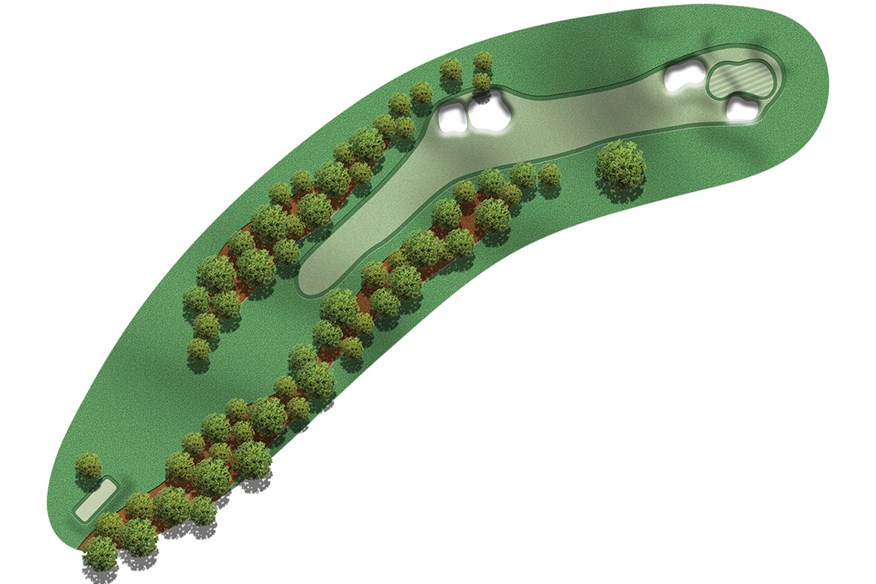
Hole No.18: Holly
Par 4: 465 Yards
One of the most famous finishing holes in golf, the 18th at Augusta National is an uphill dog-leg right which off the tee is protected by protruding trees on the right and two bunkers on the left elbow, which were carryable before the course was lengthened. At 465 yards, a drive down the center of the fairway will require a good mid-iron to hit a green guarded by two bunkers.
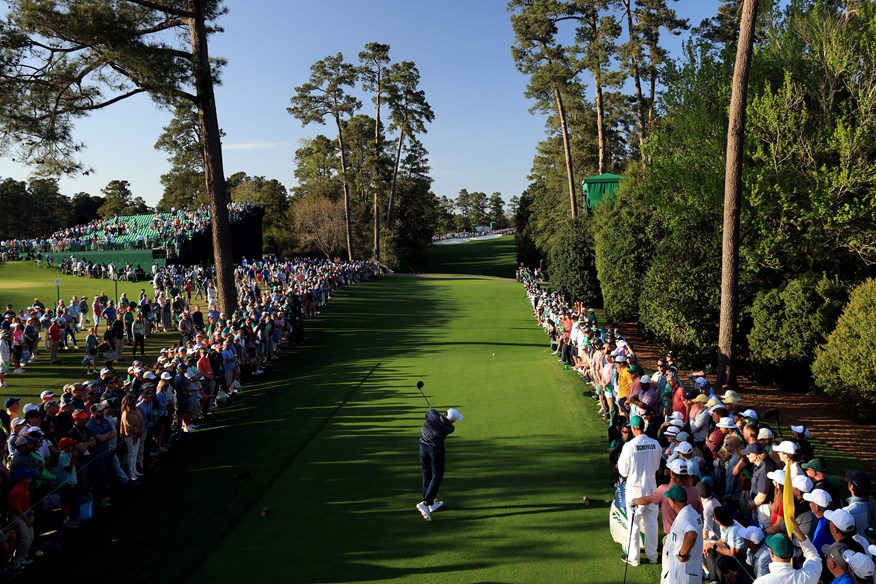
To score well on 18 you need to avoid these green side bunkers and understand the pin locations and where to land the ball, with the green having two distinct tiers. The scoring average is 4.23, making it the seventh-hardest on the course – maybe made slightly harder with the pressure of the final hole at The Masters and the hundreds of patrons that surround the green.
Bubba Watson’s plan:
This is difficult because it’s tight and my cut goes straight at the traps. The longer shot in takes away some advantage but I’m still hitting a shorter iron than others. On the back pins, you play smart and take a two-putt.
READ NEXT: Think you’re ready to tackle Augusta? Here’s how you can get a tee time there.
-
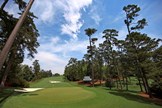 Our hole-by-hole guide to Augusta National Golf Club, home of The Masters.
Our hole-by-hole guide to Augusta National Golf Club, home of The Masters.
-
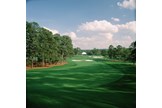 2nd hole at Augusta National.
2nd hole at Augusta National.
-
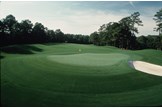 5th hole at Augusta National.
5th hole at Augusta National.
-
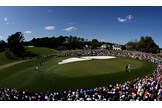 9th hole at Augusta National.
9th hole at Augusta National.
-
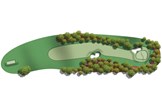 Hole 1 at The Masters.
Hole 1 at The Masters.
-
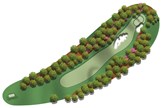 Hole 10 at The Masters.
Hole 10 at The Masters.
-
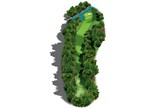 Hole 11 at The Masters.
Hole 11 at The Masters.
-
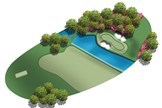 Hole 12 at The Masters.
Hole 12 at The Masters.
-
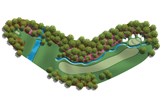 Hole 13 at The Masters.
Hole 13 at The Masters.
-
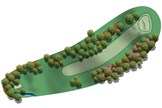 Hole 14 at The Masters.
Hole 14 at The Masters.
-
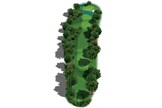 Hole 15 at The Masters.
Hole 15 at The Masters.
-
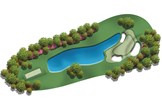 Hole 16 at The Masters.
Hole 16 at The Masters.
-
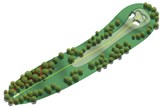 Hole 17 at The Masters.
Hole 17 at The Masters.
-
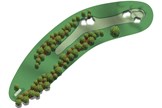 Hole 18 at The Masters.
Hole 18 at The Masters.
-
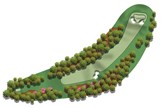 Hole 2 at The Masters.
Hole 2 at The Masters.
-
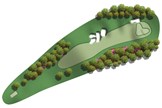 Hole 3 at The Masters.
Hole 3 at The Masters.
-
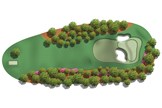 Hole 4 at The Masters.
Hole 4 at The Masters.
-
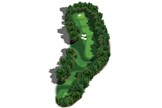 Hole 5 at The Masters.
Hole 5 at The Masters.
-
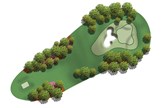 Hole 6 at The Masters.
Hole 6 at The Masters.
-
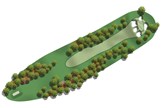 Hole 7 at The Masters.
Hole 7 at The Masters.
-
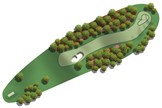 Hole 8 at The Masters.
Hole 8 at The Masters.
-
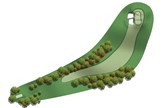 Hole 9 at The Masters.
Hole 9 at The Masters.
-
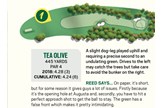 1st hole, Augusta National
1st hole, Augusta National
-
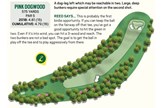 2nd hole, Augusta National
2nd hole, Augusta National
-
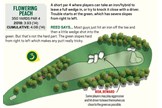 3rd hole, Augusta National
3rd hole, Augusta National
-
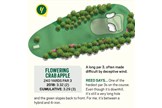 4th hole, Augusta National
4th hole, Augusta National
-
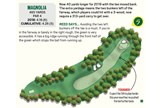 5th hole, Augusta
5th hole, Augusta
-
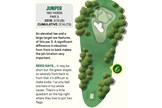 6th hole, Augusta National
6th hole, Augusta National
-
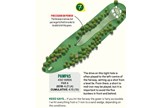 7th hole, Augusta National
7th hole, Augusta National
-
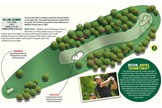 8th hole, Augusta National
8th hole, Augusta National
-
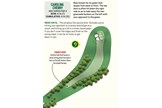 9th hole, Augusta National
9th hole, Augusta National
-
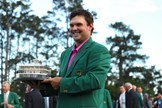 Patrick Really eed
Patrick Really eed
-
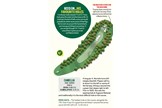 10th hole, Augusta National
10th hole, Augusta National
-
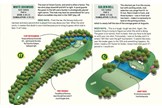 Hole 11 and 12, Augusta National
Hole 11 and 12, Augusta National
-
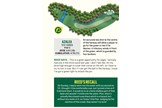 13th hole, Augusta National
13th hole, Augusta National
-
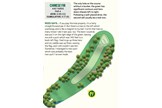 14th hole, Augusta National
14th hole, Augusta National
-
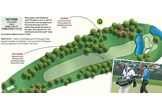 15th hole, Augusta National
15th hole, Augusta National
-
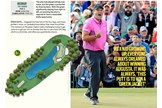 16th hole, Augusta National
16th hole, Augusta National
-
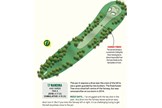 17th hole, Augusta National
17th hole, Augusta National
-
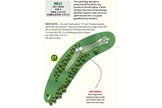 18th hole, Augusta National
18th hole, Augusta National
